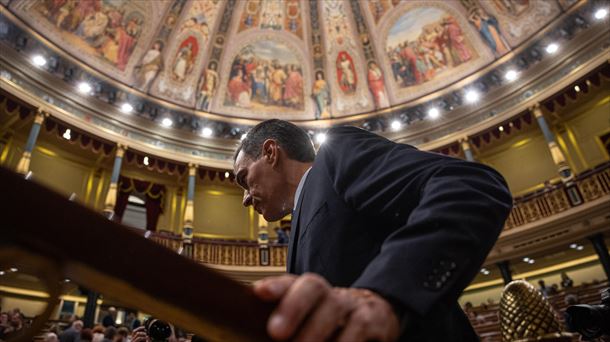The outgoing US administration of President Joe Biden says it is imposing the toughest sanctions to date on Russia’s energy sector.
The measures target two of Russia’s largest oil companies, Gazprom Neft and Surgutneftegas, the Treasury Department in Washington said. Sanctions are also imposed on 183 ships, most of which the US government considers part of the so-called Russian shadow fleet.
These are tankers and cargo ships that Russia uses to circumvent existing sanctions on oil transport. Specific projects and infrastructure for liquefied natural gas (LNG) and subcontractors, service providers, traders and maritime insurers are also affected.
The US government wants to hit production and supply chains
With the new measures, the US government aims to hit the production and supply chains of Russia’s energy industry, weakening the structure that the Kremlin uses to finance its war of aggression against Ukraine. “Our sanctions are like sand in the gears of the Russian war machine,” the report said. Britain will join the sanctions. “We expect our actions will cost Russia billions of dollars every month.”
The US government hopes to further weaken the Russian currency, increase inflation and prompt the Russian central bank to raise its key interest rate even further. This has already reached a record level. This, in turn, could further worsen the financial situation of Russian companies. “The aim is to change Putin’s calculation of the costs of continuing a senseless war while giving Ukraine greater leverage – the leverage the country needs to negotiate a just and lasting peace,” it said report.
Washington sees a changing situation on the energy markets
Washington justified the timing of the sanctions with a changed situation in global energy markets. “At the beginning of the war (in February 2022), energy markets were very tense and we were concerned that measures against Russian oil exports could drive up prices so much that Russia would end up earning more despite lower sales volume,” he said. the report. That is why they initially worked with G7 allies on a price ceiling for Russian oil exports to third countries. The current market situation with increased production capacities – for example in the US, Canada and Brazil – now allows a tougher approach without destabilizing the global oil market.
However, with the inauguration of Republican Donald Trump on January 20, the dynamics of US sanctions policy could fundamentally change. When asked how the situation might develop after the change of administration, senior Biden administration officials said they could not speak for the next administration: “It is entirely up to them to decide whether, when and under what conditions to will accept the dissolution of the government. sanctions imposed on us.”
Trump’s new Ukraine policy was eagerly awaited
Trump regularly emphasizes his good relations with Russian President Vladimir Putin. During the election campaign, he repeatedly claimed that he could end the war in Ukraine within 24 hours, but did not say how. There are concerns in Kiev and other European capitals that Trump could cut aid to Ukraine to pressure the government there to negotiate with Moscow.
Meanwhile, the Biden administration is taking the final steps to send expanded military assistance to Kiev so that funds already approved by Congress can be used in a timely manner. The new sanctions add to a long line of measures taken by the United States and allies – including the European Union – since the start of the war to weaken Moscow’s revenues and military capacity.
Source: Krone
I am Ida Scott, a journalist and content author with a passion for uncovering the truth. I have been writing professionally for Today Times Live since 2020 and specialize in political news. My career began when I was just 17; I had already developed a knack for research and an eye for detail which made me stand out from my peers.


